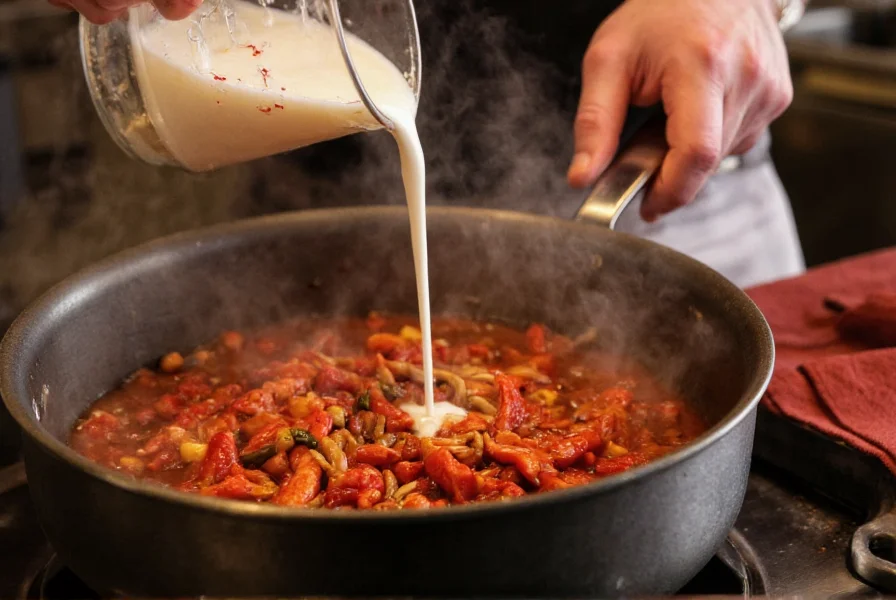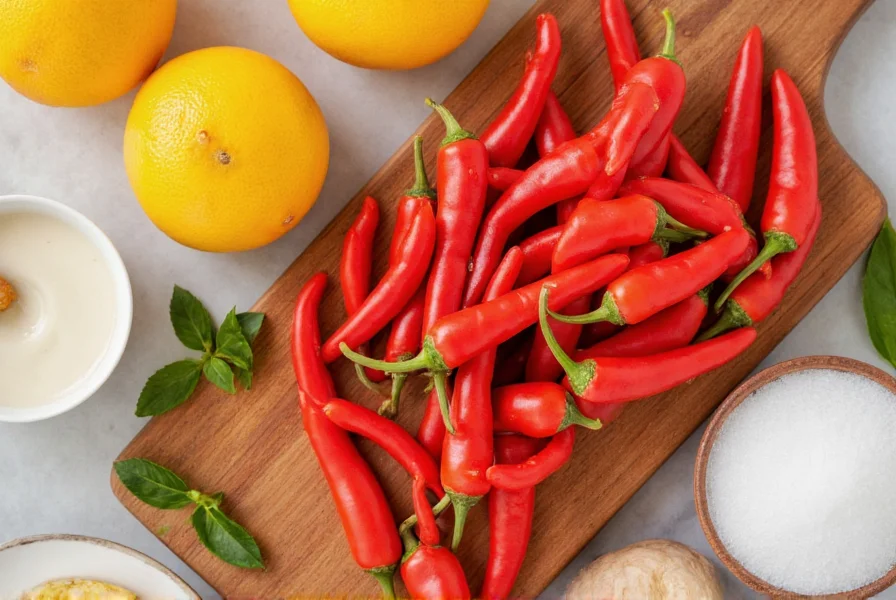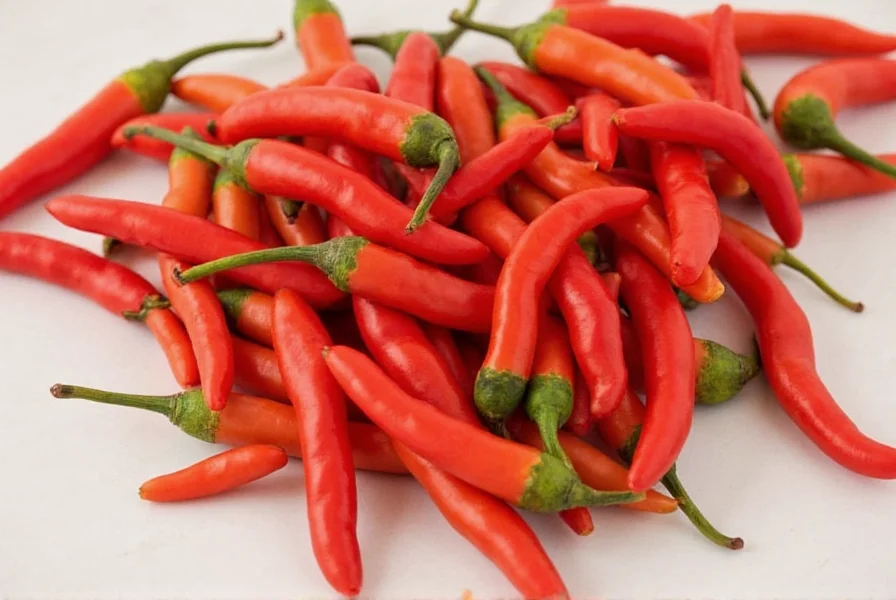If you've ever made chili that's uncomfortably spicy, you're not alone. The good news is there are several science-backed methods to reduce heat without ruining your dish. Capsaicin, the compound responsible for chili heat, is oil-soluble and alkaline-reactive, which explains why certain ingredients work better than others for neutralizing spiciness.
Why Chili Gets Too Spicy and How to Fix It
When chili becomes too spicy, it's usually because of an overabundance of capsaicin from ingredients like cayenne pepper, hot sauce, or spicy chilies. Understanding how capsaicin interacts with other substances helps you choose the most effective remedy. Unlike what many believe, drinking water won't help—it actually spreads the capsaicin around your mouth. Instead, target solutions that chemically bind with or dilute the capsaicin.

Most Effective Methods to Reduce Spiciness in Chili
Dairy Products Neutralize Heat Instantly
Dairy contains casein, a protein that breaks down capsaicin molecules. This is why milk, yogurt, or sour cream work so well for how to tone down spicy chili immediately. Add 1/4 to 1/2 cup of full-fat dairy to your chili, stirring thoroughly. For best results, use cold dairy products as they provide immediate relief to your taste buds while also reducing the overall spiciness of the dish.
Acidic Ingredients Balance the Heat
Adding acid helps counteract the alkaline nature of capsaicin. Try incorporating:
- Fresh lime or lemon juice (start with 1-2 tablespoons)
- Vinegar (apple cider works well)
- Tomato paste or crushed tomatoes
Acids don't eliminate capsaicin but create a flavor balance that makes the heat less noticeable. This method is particularly effective for how to reduce heat in chili without changing flavor significantly.
| Method | How Much to Add | Time to Simmer | Best For |
|---|---|---|---|
| Dairy (milk, yogurt) | 1/4-1/2 cup | 5-10 minutes | Immediate heat reduction |
| Acid (lime juice, vinegar) | 1-2 tbsp | 5 minutes | Flavor balance |
| Sweeteners (sugar, honey) | 1-2 tsp | 10 minutes | Complex flavor profiles |
| Dilution (beans, broth) | 1-2 cups | 15-20 minutes | Preserving original texture |
Sweeteners Counteract Spiciness
Sugar, honey, or even a touch of maple syrup can balance excessive heat through flavor contrast. Start with 1-2 teaspoons and adjust to taste. Sweeteners work particularly well in recipes that already have some sweetness, like those containing bell peppers or sweet potatoes. This approach is ideal when searching for what to add to chili to make it less spicy while maintaining complexity.
Dilution Techniques for Quick Fixes
One of the most reliable quick fixes for too spicy chili is dilution. Add more of your non-spicy base ingredients:
- Additional beans (kidney, black, or pinto)
- Extra tomatoes or tomato sauce
- More broth or stock
- Chopped vegetables like zucchini or corn
When diluting, maintain your recipe's flavor balance by adding proportional amounts of all non-spicy ingredients, not just liquid.

Starchy Solutions That Absorb Heat
Ingredients like potatoes, rice, or even a slice of bread can absorb some capsaicin. Add a peeled, whole potato to your simmering chili for 15-20 minutes, then remove it. The potato won't eliminate all heat but will reduce it noticeably. This method works well as a how to fix overly spicy chili recipe when you don't have dairy available.
What NOT to Do With Overly Spicy Chili
Avoid these common mistakes when trying to reduce spiciness:
- Don't add more hot ingredients - even if a recipe calls for it
- Avoid excessive water - it dilutes flavor without effectively reducing heat
- Don't keep adding remedies - this can create unbalanced flavors
- Don't serve immediately - give fixes time to integrate (5-15 minutes)
Preventing Overly Spicy Chili in the Future
The best approach for how to make spicy chili less spicy is prevention:
- Add spicy ingredients gradually, tasting as you go
- Start with half the recommended amount of hot peppers or spices
- Remove seeds and membranes from fresh chilies (where most capsaicin resides)
- Keep dairy or acidic ingredients ready during cooking for quick adjustments
- Consider using milder chili varieties like ancho instead of cayenne
Frequently Asked Questions
How quickly do these methods work to reduce chili spiciness?
Dairy solutions work almost immediately upon stirring in, while acidic and sweetening methods need 5-10 minutes of simmering to fully integrate. Dilution methods require 15-20 minutes for flavors to balance properly. For immediate relief while eating, dairy products like sour cream provide instant cooling.
Can I use coconut milk to reduce spiciness in chili?
Yes, coconut milk works well as a dairy-free alternative to reduce spiciness. The fat content in coconut milk binds with capsaicin similarly to dairy products. Use full-fat coconut milk for best results, adding 1/4 to 1/2 cup to your chili. This method is particularly effective for Thai-inspired or vegetarian chili recipes where coconut flavor complements other ingredients.
Will adding more tomatoes make my chili less spicy?
Yes, adding more tomatoes can help reduce perceived spiciness through dilution and the acidity in tomatoes which balances heat. Use 1-2 cups of crushed tomatoes or tomato sauce, then simmer for 10-15 minutes. This method works particularly well for tomato-based chili recipes as it maintains the flavor profile while reducing heat intensity.
How can I fix chili that's too spicy without changing the flavor significantly?
To reduce spiciness with minimal flavor impact, use a combination of small amounts of dairy (like cream) and a touch of acid (lime juice). Start with 2-3 tablespoons of each per quart of chili, then adjust. This approach preserves your original flavor profile better than adding large quantities of sweeteners or additional ingredients that might alter the intended taste of your how to reduce heat in chili without changing flavor solution.
Can I freeze overly spicy chili and fix it later?
Freezing won't reduce spiciness—it preserves the current heat level. However, freezing gives you time to plan your fix. When ready to use, thaw the chili completely, then apply reduction methods like adding dairy, acid, or diluting with additional ingredients. This approach works well for meal preppers who want to fix how to fix overly spicy chili recipe batches without immediate pressure.











 浙公网安备
33010002000092号
浙公网安备
33010002000092号 浙B2-20120091-4
浙B2-20120091-4